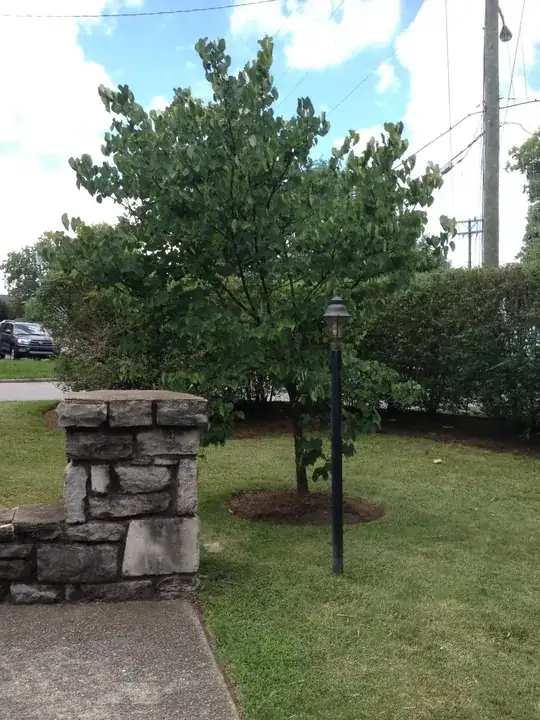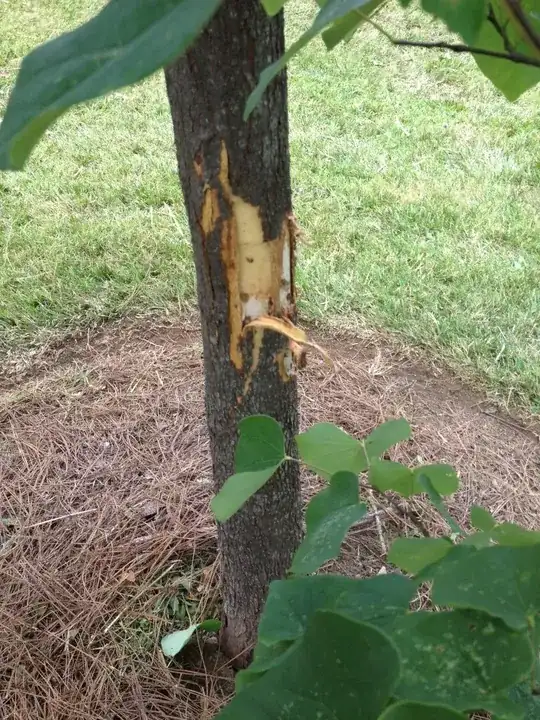Diagnosis from a picture is hard but I can make these observations:
- tree looks healthy with a reasonable branch structure
- no signs of previous trunk damage
- good practices have been followed by not letting grass grow up to the trunk
- it is mulched with a thin layer of pine needles, another good practice
- it is not staked which is another good practice and indicates it was firmly rooted
- the way the leaves are hanging indicates it is dry. (Not unusual at this time of year)
- it is now leaning. I cannot say whether this is new or was existing
- the bark has been removed or damaged to around half the circumference of the tree
Given what you have told us you can assume some fine feeder roots have been broken. This should not be too critical but the damage to the bark while the tree is dry and stressed could easily cause half the foliage to die back. The bark is somewhat inert cellulose but underneath it is the transport system for nutrients and water in the xylem and phloem tissue. Now that half of it is gone half the amount of water will be arriving at the leaves.
Ambitious gardeners might suggest bridge grafting and this would work if you could find someone who was qualified.
This appears to be a specimen tree in a highly visible location. Only you can decide if you want to try saving it with a grafting job and frequent watering over the next few months or whether other options are available.
A quick survey of your local garden centres and landscapers will tell you if a similarly sized tree is available. Where I live many magnolia species are available as a balled and burlapped specimen in a wire basket at heights up to 8' feet for less than $300 wholesale. Prices in your area may vary.

